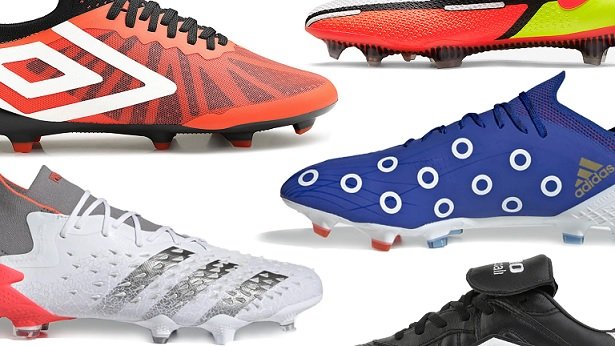Picking a new pair of soccer cleats can be confusing and intimidating. There are many different options available depending on the playing surface.
Firm-ground (FG) soccer cleats feature molded studs that provide traction on natural grass fields. However, they are not suited for use on turf or indoor surfaces.
Stability
Firm ground cleats, or FG or football cleats, offer your feet comfort and stability like no other shoe. Featuring molded rubber or synthetic outsoles designed for shorter studs, they help you keep your footing strong on firm, natural surfaces like dry grass and dirt.
These cleats are perfect for practice drills and games on flat, natural grass fields. The stud pattern is optimized for excellent traction on natural grass while minimizing the impact on your joints. You can even use these cleats on artificial turf (although we wouldn’t recommend it).
The studs are designed to penetrate the ground, keeping you planted and stable while moving around. This helps you to change direction faster and react quicker to the movement of other players or the ball. Moreover, the studs are shorter than those in soft ground cleats, reducing the chance of you getting stuck to the pitch and helping to prevent injuries.
Choosing the right pair of soccer cleats from a reliable shop like Soccer Wearhouse is essential to your success on the field. Consider your playing surface and the position you play before making your choice. If you play defense, look for cleats focusing on durability, while midfielders should consider options that prioritize touch and speed. You’ll be happy you invested in the right cleats when you see how they improve your game!
Grip
Whether edging out the defenders to create a space to shoot or passing the ball in tight quarters, a firm grip on the ground helps you maintain your speed and control the ball. Firm ground soccer cleats feature a stud pattern and construction that provide optimal grip on natural grass surfaces. They also offer a lightweight, flexible fit that lets you keep up with your fast, dynamic game.
The studs in FG cleats are shorter than those on other types of cleats, which reduces the pressure they place on your feet and lower legs during play. This can help prevent injuries and improve your performance. The cleats are also spaced closer together, which provides better traction and stability on natural grass surfaces.
Firm-ground soccer cleats are not designed for artificial turf or indoor surfaces, and using them on these surfaces can damage the cleats and cause discomfort. For this reason, it’s recommended that you use cleats explicitly designed for those surfaces. However, a few cleat options can be used on artificial turf and natural grass cleats. These cleats have a mix of circular and bladed studs that better grip natural and synthetic surfaces. They are the best choice for players who often switch between natural and artificial grass playing fields.
Durability
When it comes to soccer cleats, there is a wide variety of options for players to choose from. Some cleats are designed for natural grass, while others are meant for artificial turf and hard ground. Wearing cleats designed for this surface is essential when playing on a firm or natural grass field. Cleats not intended for this type of surface can cause a lot of pressure on your feet and legs, leading to injuries.
The studs on firm-ground soccer cleats are usually longer than those found on cleats designed for artificial or hard ground. This allows them to penetrate the soil better when you are running on a firm or natural grass field. Some cleats are also designed with bladed and conical studs to provide the best possible traction on any grass surface.
Soft-ground soccer cleats are also designed to provide traction on any natural or artificial grass field, but they are typically worn by players in wet climates. These cleats are also designed with mud and rain in mind. Unlike the molded studs of FG cleats, soft ground cleats have metal screw-on studs that allow them to sink in deeper when wet.
It is essential to consider what your priorities are when selecting a cleat. While some cleats may be better suited for speed or touch, most players will want to have the ability to play on a variety of different surfaces. Fortunately, most brands now offer multi-ground (MG) cleats that can be used on natural or artificial surfaces.
Comfort
When wearing cleats for soccer, it’s essential to wear the right shoes on the correct playing surface. This can save you money on cleats, prevent injury, and ensure you get the most from your shoes. Using the wrong shoe can be costly, damage your cleats, and even injure your knees or ankles.
Firm ground cleats (FG) are designed to be worn on natural grass soccer fields that are usually dry or only slightly wet. They have a set of non-removable molded studs that are either bladed or conical and designed to provide traction on firm surfaces. FG soccer shoes for 3G or 4G artificial surfaces can also be found.
Although you can still play on natural grass soccer fields with cleats for other surfaces, it’s not recommended. Shoes made explicitly for turf or artificial grass have shorter studs and are more likely to dig into the turf than FG soccer shoes. This can cause your cleats to wear out faster, reducing the shoe’s comfort.
If you plan on playing professionally or regularly, you’ll want to invest in a pair of FG soccer shoes. They will provide the most traction and stability for your feet. In addition to providing traction and strength, a pair of FG soccer shoes will also help you to feel more comfortable during long practice sessions.
